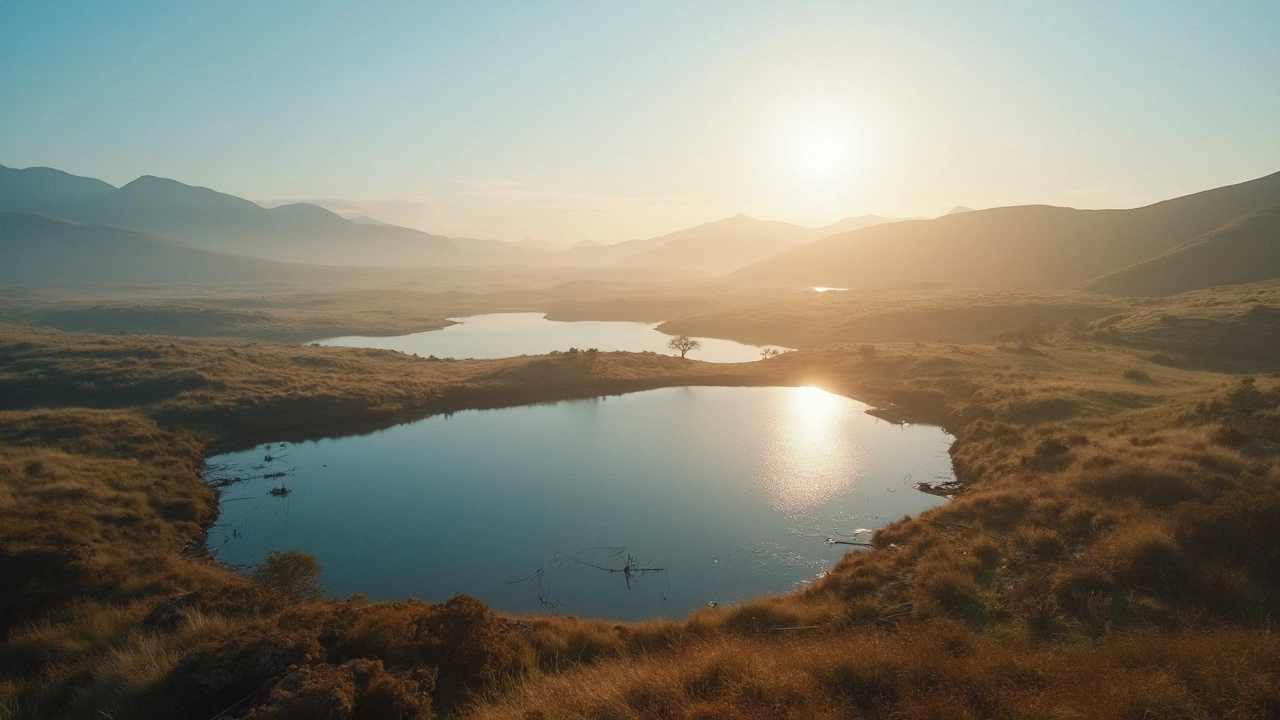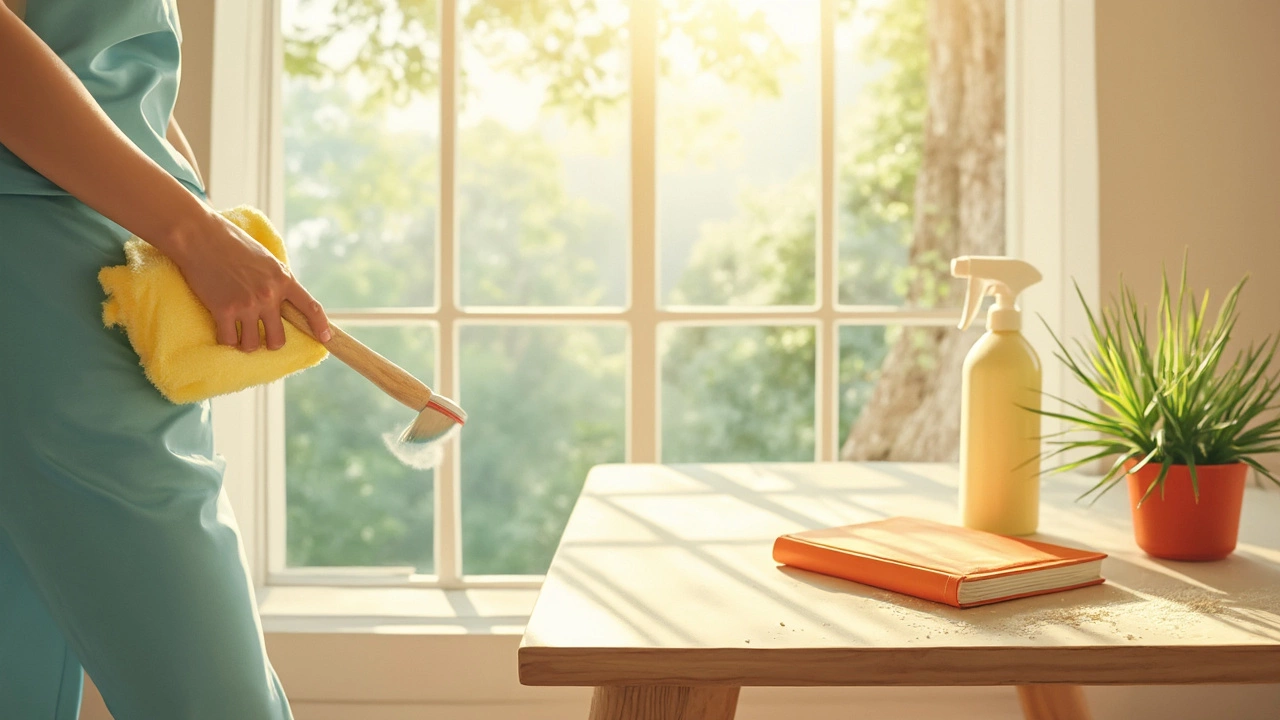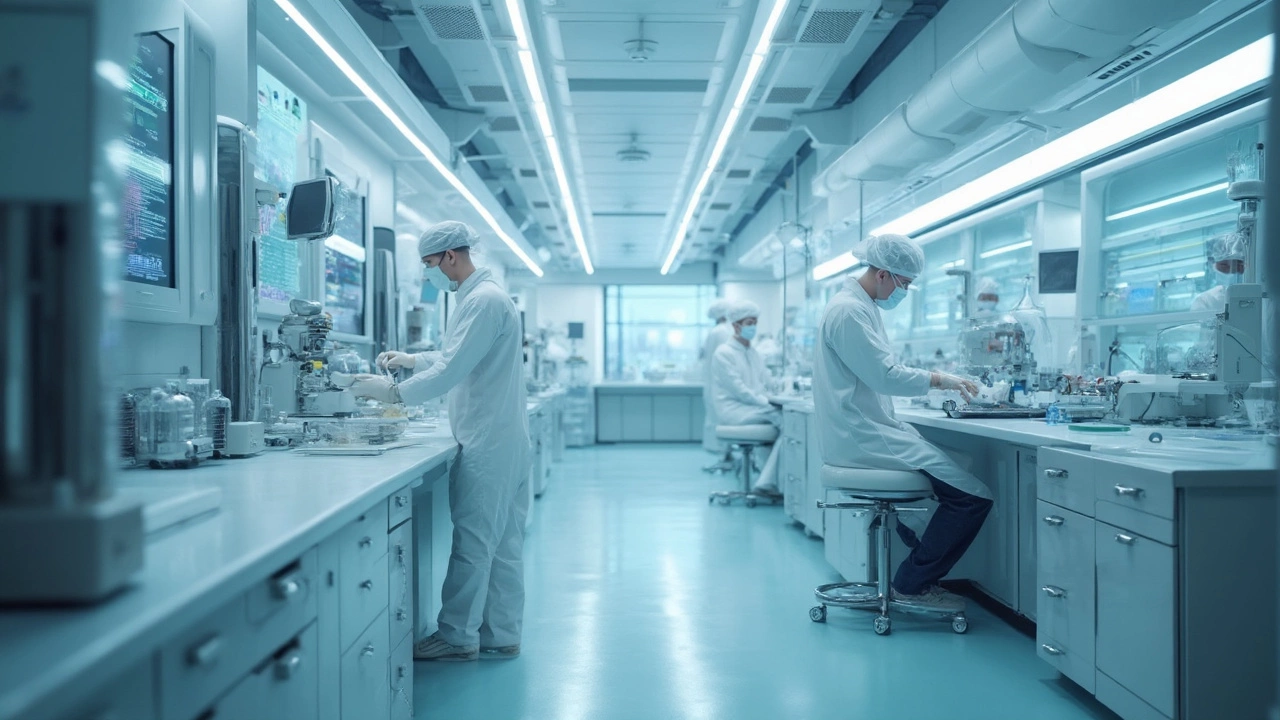Picture a giant room where a single speck of dust is enough to set off alarm bells. This exists, and believe it or not, it’s not in some sci-fi movie. The cleanest places on earth are real, and they’re not your sparkling white bathroom or even a five-star hotel suite. The actual winners for strict cleanliness are so clean, most of us have never set foot inside them. Ever wondered what it’s like to step inside a place where germs just can’t hang around?
Why "Clean" Means More Than Just Tidy
Most people think of "clean" as a freshly mopped floor or that lemony scent after a weekend scrubfest. But in scientific terms, clean isn’t just about what you can see or smell. It’s about the total absence of unwanted… well, pretty much everything: bacteria, dust, viruses, pollen, and those invisible little fibers floating around everywhere. When scientists talk about the world’s cleanest places, they’re usually talking about places where even a single microscopic particle is tracked, recorded, and eliminated.
Take your phone, for example. Studies find it carries about ten times more bacteria than most toilet seats. Kinda shocking, right? By contrast, ultra-clean labs have fewer than 10 particles per cubic meter, and most of them are smaller than your eye could ever see. Why so extreme? Because everything from high-tech microchips to spacecraft needs absolutely zero contamination. Your living room, spotless as it looks on a good day, doesn’t even make the top billion list.
And here’s the kicker. Cleanliness in some places is not just about health. Sometimes, one dust mote can blow a multi-million-dollar experiment. A single sneeze in the wrong room can ruin years of research or a complex device.
In the real world, outside those controlled spaces, nature and messy humans win. Even the floor of the forest, home of trillions of microorganisms, serves its own "clean" role in balancing ecosystems. But for pure, germ-busting clarity, you have to go where machines and people wear suits that make astronauts jealous.
The Sterile Supremacy of Clean Rooms
Welcome to the land of bunny suits and high-efficiency air filters. The cleanest places on earth are clean rooms—high-tech labs where even your breath could cost a fortune. These exist mainly in industries that make semiconductors, pharmaceuticals, spacecraft, and research labs studying tiny particles. Maybe you’ve seen photos: people in head-to-toe white suits, goggles, gloves, masks. It looks a bit like medical cosplay, but the stakes are way higher.
One of the most legendary clean rooms exists at NASA’s Jet Propulsion Laboratory in California. Here, every single part of a space probe gets obsessively cleaned, then double-checked for invisible microbes and dust. The standard they use is called ISO 1. That’s not just extra; it’s the highest level of cleanliness defined by international standards. Imagine a room with only 10 particles (smaller than half a micron) per cubic meter. For perspective, a typical outdoor environment has nearly 35 million such particles in the same space. You could eat off the floor in here, but no one would let you in without a thousand checks and a special suit.
So, what does this cleaning look like? It starts with “air showers.” You literally get blasted by jets of clean air to wipe off dust before entering. Humidity and air pressure are tightly controlled. Moving air sweeps away anything floating around, and machines constantly count the number of tiny particles. Tools and parts get wiped down with special wipes in little alcohol baths before they can come in, and even the floors and ceilings are designed so nothing can settle on them. The air doesn’t just get filtered once or twice—it cycles through massive HEPA or ULPA filters every few minutes, scrubbing out the tiniest germs and dust specks. If you forget to button one snap on your suit, alarms blare, supervisors descend, and a whole shift’s worth of work might be ruined.
| Environment | Particles (per cubic meter) | Particles' Diameter |
|---|---|---|
| City Air | 35,200,000 | >0.5 μm |
| Hospital ICU | 10,000 - 100,000 | >0.5 μm |
| NASA Clean Room (ISO 1) | 10 | >0.1 μm |
Fun fact: If you brought an average shirt into one of these rooms, it could shed millions of particles just while you’re standing still. That’s why workers wear those silly-looking suits—nothing escapes, not even a rogue eyelash.
What happens if a mistake slips by? Contaminated satellites risk “forward contamination”—delivering Earth germs to Mars, which is why NASA became obsessed with clean rooms after their early space probes were blamed for possible cross-planet contamination. Legit, a single microbe can cause planetary confusion.

Nature’s Pristine Corners
Now, let’s step outside the lab. Who holds the title of cleanest place in the natural world? Antarctica is the first thing that pops to mind, and for good reason. Miles from industry, cars, or even most humans, massive stretches of the icy continent are almost untouched. The dry valleys of Antarctica are famously inhospitable to bacteria. In places like the McMurdo Dry Valleys, it’s so cold and dry that hardly anything—not even germs—can survive on the soil. Some patches of snow have not seen a human footprint for centuries. Scientists sampling the air and ground here find fewer living microbes than almost anywhere else.
But “pristine” is a slippery word. Even Antarctica’s air isn’t pure, thanks to long-distance winds. As weird as it sounds, dust from the Sahara Desert can float all the way to the southern polar ice. Far-off volcanic eruptions, wildfires, even microplastics, can show up in ice samples from the so-called “cleanest” places. Long-range air currents don’t care about borders. For a while, Lake Vostok, buried deep under Antarctic ice, was considered one of the most unspoiled places on Earth, but humans drilling into it for research quickly changed that.
Other contenders for natural cleanliness include some uninhabited Pacific islands, where winds sweep in from thousands of miles with no major pollution. Still, even these get heat-trapped carbon, plastic dust, or fallout from far-off factories. Turns out, there’s almost nowhere on Earth that modern humans haven’t touched with our dirty fingers—at least, a little bit.
That doesn’t mean nature’s cleanest spots aren’t valuable or awe-inspiring. In fact, these rare zones serve as key baselines for environmental science. By analyzing how little contamination exists, scientists can spot changes in global pollution patterns and even track how fast new pollutants travel the globe.
The World’s Most Extreme Cleanliness: Hospitals, Labs, and Beyond
It’s not just space probes and Antarctic snows battling for the “cleanest” crown. Hospitals, especially burn wards and intensive care units, target near-perfect hygiene, too. It’s a constant battle. Superbugs—bacteria resistant to drugs—love a challenge. In elite surgical suites, daily “terminal cleans” mean every surface gets scrubbed, sprayed, and sometimes zapped with UV light. But even here, total sterility is never possible. Germs, stubborn things that they are, adapt quickly, which is why doctors still get nervous about outbreaks despite scanning, spraying, and scrubbing everything down.
Pharmaceutical companies also run state-of-the-art clean rooms. Before a single pill or vaccine gets shipped out, labs are swept by robots wielding lasers to scan for contamination. A single dust flake means batches can get recalled, costing millions. One time, a factory in Switzerland traced a massive recall to a single glove fiber found in a critical machine. Not even joking—a stray fiber shut down a year’s production.
Food processing plants trail the hospitals and clean rooms. Here, the stakes aren’t as astronomically high, but hygiene is still king. In the cheese world, for example, some famous producers enforce foot baths for everyone entering the ripening rooms to keep out stray bacteria. Fast food kitchens outfit their staff with hairnets, plastic gloves, and more hand sanitizer than the average doctor’s office. But even with fancy tricks, there’s just no way to keep every single pathogen out.
- Best practices for world-class cleanliness include HEPA air filtration, constant surface testing, and, believe it or not, hourly rotation of staff work clothes.
- Some research labs monitor not just dust but also how much human DNA is floating around. (That’s a thing!)
- UV sterilizers are standard now in both high-tech labs and hospital rooms, killing whatever might be hiding in the shadows.
- Even wild stories pop up—like one Tokyo hospital that keeps a living frog tank. Their purpose? Natural pest control against germs.
So why can’t the real world ever be perfectly clean? Germs are resilient. They travel on shoes, on wind, in water droplets. Once, Derek accidentally coughed while holding a microscope slide at his lab, and it ruined an entire week of data. No cleaning system is perfect. Clean rooms, Antarctica, scrubbed hospital wards—they all exist in a constant war against microscopic invaders.

Takeaways for Everyday Clean Freaks
Alright, maybe you’re not prepping satellites or running experiments on deadly bacteria. Still, knowing what “the cleanest place on earth” looks like can inspire some pretty effective stuff for your own routine.
- Wash hands—not just with a squirt of soap, but the way medical staff do it: under nails, up the wrists, around the thumb, for about 20 seconds.
- Cell phones are literal germ hotels. Wipe yours daily with a disinfectant wipe. Might not make it “clean room” worthy, but it won’t gross you out as much.
- If someone is sick at home, crank up the cleaning with bleach-based cleaners and open the windows. Germs hate fresh air and sunlight.
- For allergies, invest in a HEPA air filter. These suck up everything—dust, pollen, pet dander—even most bacteria.
- When prepping food, clean surfaces before and after, and if you have cutting boards, keep one just for meat and one for veggies.
- Laundry tip: Use hot water to really kill dust mites and bacteria, especially if clothes have spent time in the gym—or on public transit.
There’s no place on earth that’s totally hygienic, unless you count those high-tech chambers where you can’t even breathe without special clearance. Think of the “cleanest place” less as a location and more as an ongoing quest. You can’t see the real dirt—germs are invisible, and they don’t take weekends off. But every small change, from how you wash to what you bring indoors, nudges you a little closer to that clean room magic.





